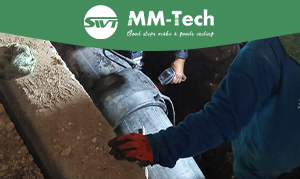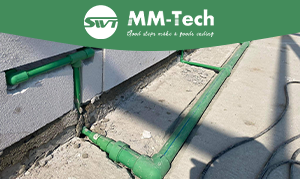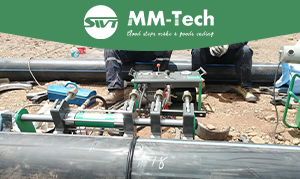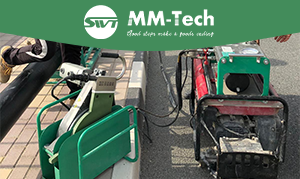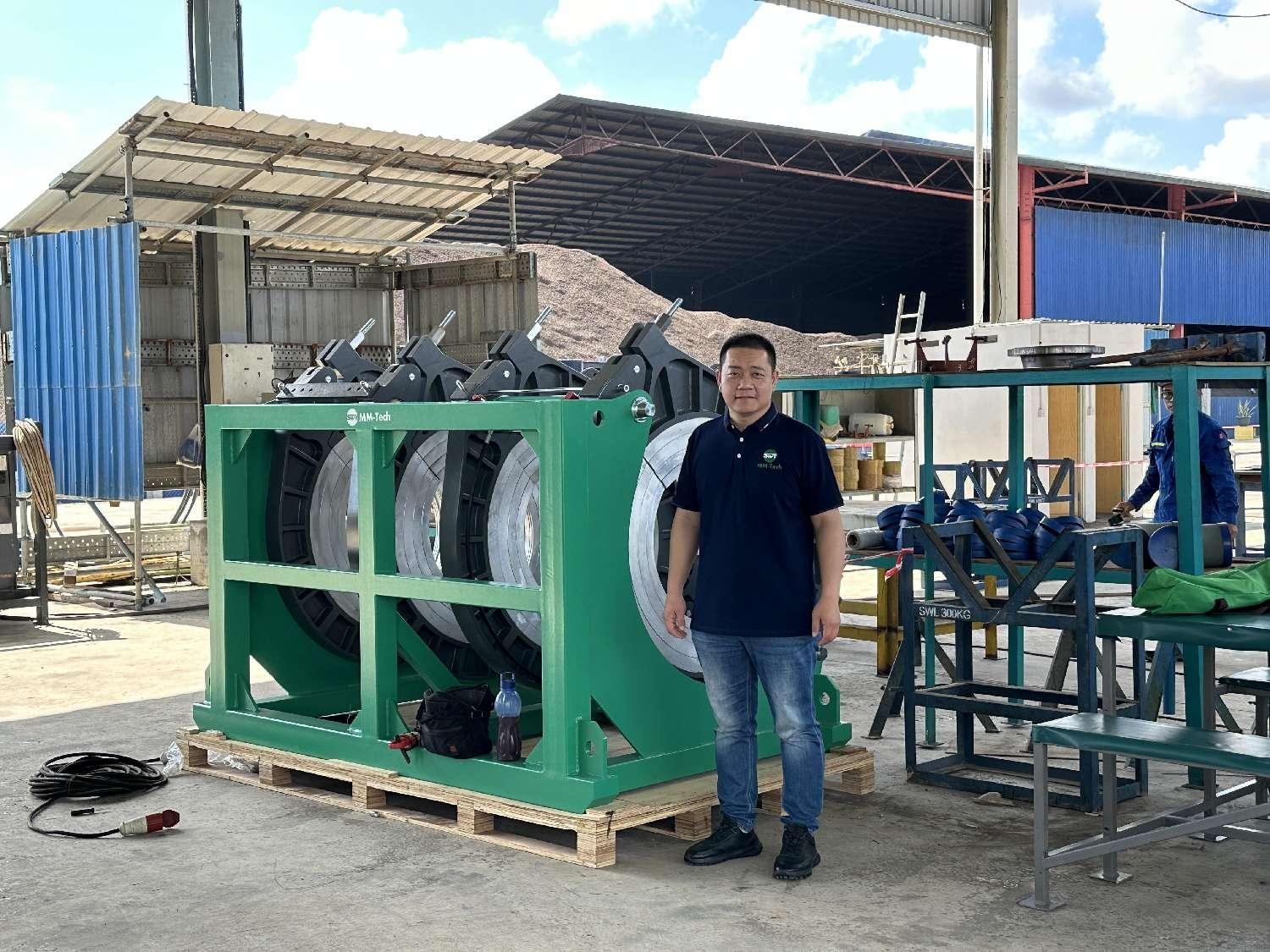Bead thickness plays a vital role in HDPE pipe welding. It directly affects the strength and durability of the weld bead, ensuring the joint withstands stress over time. Studies show that fracture toughness decreases with increased specimen thickness, highlighting the need for precise control. Using an HDPE butt fusion machine, like the MM-Tech model, helps you achieve consistent performance by maintaining optimal bead dimensions.
Key Takeaways
Bead thickness is important for strong and long-lasting HDPE pipe welds. Controlling it well stops joint problems and improves performance.
Set up your HDPE butt fusion machine to keep bead thickness steady. Change pressure and heating time for the best results.
Watch the temperature and pressure while welding. This keeps joints clean and strong.
Understanding Bead Thickness in HDPE Pipe Welding
What is Bead Thickness in HDPE Welding?
Bead thickness refers to the dimension of the molten polymer layer formed during HDPE pipe welding. It plays a crucial role in determining the quality of the weld bead and the overall joint integrity. When you weld HDPE pipes, the heating process melts the pipe edges, creating a molten zone. This zone solidifies to form the weld bead, which connects the pipes. The thickness of this bead must be carefully controlled to ensure the joint can withstand mechanical stress and environmental conditions.
Technical standards define bead thickness based on input parameters like force and heating duration. These factors influence output parameters such as temperature distribution and the quality of the weld joint. The table below summarizes these relationships:
Input Parameters | Output Parameters |
|---|---|
Force | Temperature distribution |
Heating duration | Thickness of the molten polymer |
Welding conditions | Quality of the weld joint |
The Role of Bead Thickness in HDPE Butt Fusion Machine Performance
Bead thickness directly impacts the performance of HDPE butt fusion machines. Machines like the MM-Tech model rely on precise control of bead dimensions to produce strong and durable welds. If the bead is too thick, it may lead to material wastage and reduced flexibility in the joint. On the other hand, insufficient bead thickness compromises the weld bead’s strength, increasing the risk of joint failure.
Mathematical models help quantify the molten zone thickness, enabling you to optimize welding parameters for better results. Investigations into mechanical properties in the weld region, including the melt zone, highlight the importance of maintaining consistent bead thickness. This consistency ensures the HDPE pipe joint performs reliably under various conditions.
Factors Influencing Bead Thickness in HDPE Welding
Several factors affect bead thickness during HDPE welding. These include welding parameters such as force, heating duration, and temperature settings. The mechanical properties of the weld region also play a significant role. The melt zone and heat-affected zones are critical areas that determine the bead’s final dimensions. By understanding these factors, you can adjust the settings on your HDPE butt fusion machine to achieve optimal bead thickness.
Proper calibration of the machine and monitoring of welding conditions ensure consistent results. For example, the MM-Tech butt fusion machine offers features like digital temperature control and a centralized control panel, making it easier to fine-tune welding parameters. These features help you maintain the ideal bead thickness, ensuring the weld bead remains strong and durable.
Consequences of Improper Bead Thickness in HDPE Welding
Issues Caused by Excessive Bead Thickness
Excessive bead thickness in HDPE welding can lead to significant mechanical and structural issues. When the bead is too thick, the inner layers of the weld region often exhibit reduced mechanical properties. These include lower elastic modulus, yield strength, and failure stress. Such reductions compromise the structural integrity of the joint, making it more susceptible to stress concentration at the interface. Research has shown that 23% of failures in HDPE pipe joints occur at the weld seam, emphasizing the critical impact of bead thickness on weld performance. Thick beads may also result in material wastage and reduced flexibility, further affecting the joint’s durability.
Problems Associated with Insufficient Bead Thickness
Insufficient bead thickness poses its own set of challenges. A thin bead often lacks the strength needed to withstand mechanical stress and environmental factors. This can lead to premature joint failure, especially in high-pressure applications. Thin beads may also fail to create a proper seal between the pipes, allowing leaks to develop over time. Inconsistent heating or inadequate pressure during welding often causes this issue. By ensuring proper calibration and monitoring of your HDPE butt fusion machine, you can avoid these problems and achieve a reliable weld.
How Bead Thickness Affects HDPE Pipe Joint Integrity
Variations in bead thickness directly influence the integrity of HDPE pipe joints. Empirical studies highlight that differences in bead thickness affect the mechanical properties of both the inner and outer layers of the weld. The table below summarizes these findings:
Findings | Description |
|---|---|
Bead Thickness Impact | Variations in bead thickness affect the mechanical properties of welded joints. |
Mechanical Properties | Inner layers show lower elastic modulus, yield, and failure stresses compared to outer layers. |
Failure Detection | 23% of failures occur at the weld seam, highlighting the importance of bead thickness. |
Maintaining consistent bead thickness ensures the weld can handle mechanical stress and environmental conditions. Machines like the MM-Tech butt fusion machine, with features like digital temperature control, help you achieve this consistency. Proper bead thickness not only enhances weld integrity but also ensures long-lasting performance.
Tips for Achieving Optimal Bead Thickness with MM-Tech Butt Fusion Machines
Importance of Machine Calibration for HDPE Welding
Proper calibration of your HDPE butt fusion machine ensures consistent weld bead thickness and joint integrity. Gradually increasing the mating pressure helps achieve the desired bead size. Applying the correct drag pressure aids material flow during welding, while slightly extending the heating time ensures sufficient melting. These adjustments prevent issues like uneven bead formation or weak joints. The MM-Tech butt fusion machine simplifies calibration with its centralized control panel and precise pressure gauge, enabling you to fine-tune settings for optimal results.
Controlling Temperature and Pressure in HDPE Butt Fusion
Temperature and pressure are critical for achieving contamination-free welding and maintaining weld integrity. Preheat the heater plate to a range of 400°F to 450°F and monitor the heating time carefully. Excessive heat can cause material degradation, while insufficient heat leads to weak bonds. Similarly, fusion pressure must match the pipe’s diameter and thickness. The table below outlines recommended ranges:
Parameter | Range |
|---|---|
Fusion Temperature | 400 – 450 degrees Fahrenheit |
Fusion Pressure | Varies with pipe diameter and thickness |
The MM-Tech machine’s digital temperature control and large pressure gauge make it easier to maintain these parameters, ensuring uniform weld bead formation.
Monitoring and Adjusting Welding Parameters for Consistent Results
Consistently monitoring and adjusting welding parameters ensures uniform bead thickness and weld quality. Adjust one parameter at a time, such as amperage or travel speed, to identify and resolve issues. Keep detailed records of adjustments to avoid repeating errors. Testing adjustments on scrap material saves time and resources. The table below highlights key parameters and their adjustment methods:
Parameter | Adjustment Method | Purpose |
|---|---|---|
Amperage | Increase or decrease based on penetration needs | To control weld penetration |
Voltage | Adjust to stabilize the arc and improve appearance | To maintain consistent weld quality |
Travel Speed | Modify to ensure uniform bead thickness | To control the size and shape of the weld |
Shielding Gas Flow | Increase for porosity issues, decrease for excess heat | To protect weld from contamination |
By leveraging the MM-Tech butt fusion machine’s advanced features, you can achieve perfect alignment, consistent welds, and long-lasting joint integrity.
Bead thickness plays a crucial role in HDPE welding. It directly impacts the strength and durability of the pipe joint. Excessive or insufficient thickness can weaken the weld. By calibrating your machine, controlling temperature, and adjusting pressure, you can achieve optimal results. These steps ensure reliable and long-lasting welds.
FAQ
What is the ideal bead thickness for HDPE pipe welding?
The ideal bead thickness depends on pipe diameter and material. Follow industry standards or consult your MM-Tech machine manual for precise guidelines.
How can you measure bead thickness during welding?
Use a caliper or similar measuring tool to check the bead’s dimensions. Ensure measurements align with recommended specifications for consistent weld quality.
Why does bead thickness vary during welding?
Bead thickness varies due to inconsistent temperature, pressure, or machine calibration. Regularly monitor and adjust these parameters to maintain uniformity.
Tip: Always test your machine settings on scrap material before starting a project to avoid errors.


